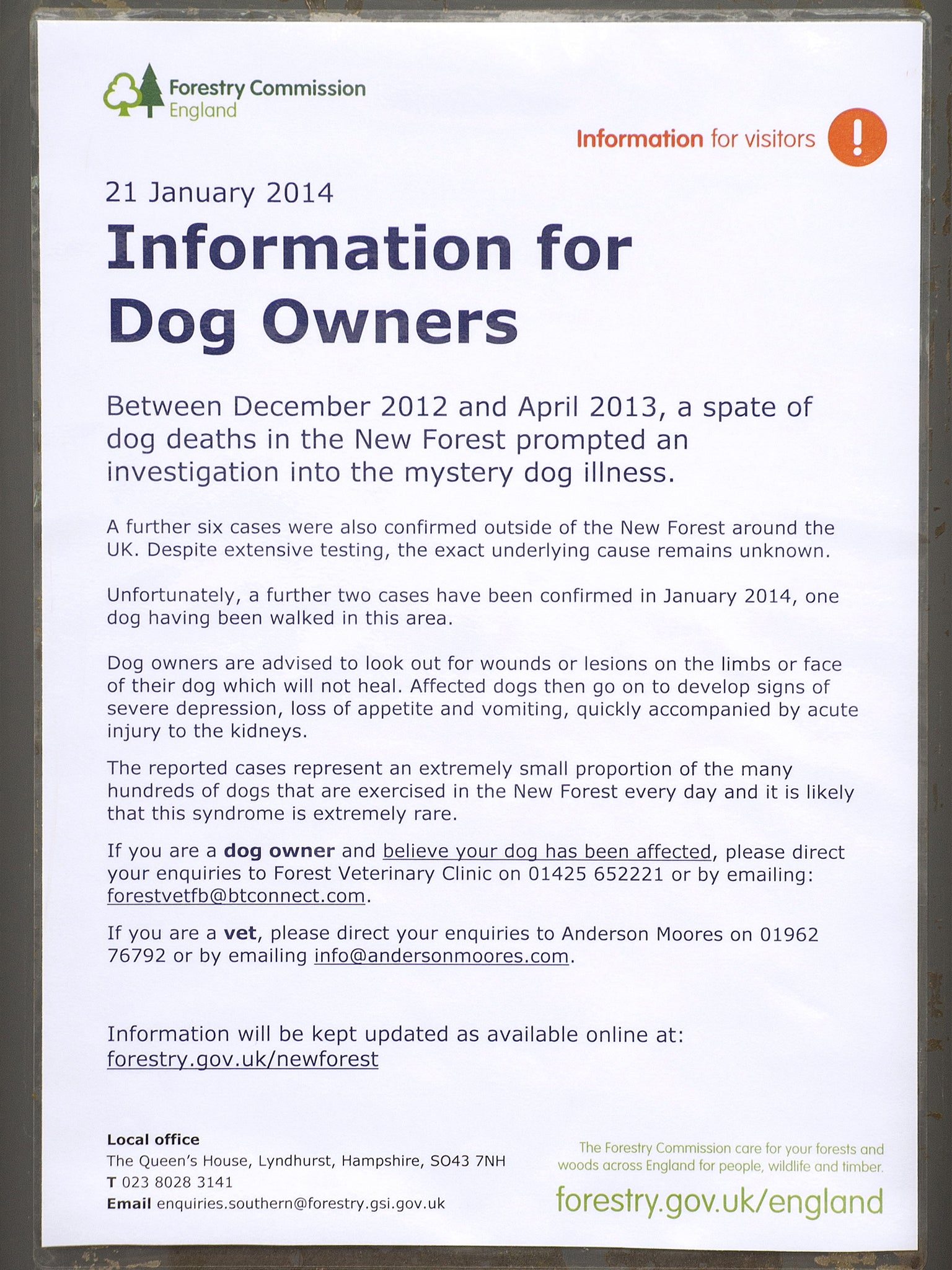Alabama rot: What is the dog disease, how common is it – and what are the symptoms?
Vets say the illness could be Alabama rot but more research is needed

Your support helps us to tell the story
From reproductive rights to climate change to Big Tech, The Independent is on the ground when the story is developing. Whether it's investigating the financials of Elon Musk's pro-Trump PAC or producing our latest documentary, 'The A Word', which shines a light on the American women fighting for reproductive rights, we know how important it is to parse out the facts from the messaging.
At such a critical moment in US history, we need reporters on the ground. Your donation allows us to keep sending journalists to speak to both sides of the story.
The Independent is trusted by Americans across the entire political spectrum. And unlike many other quality news outlets, we choose not to lock Americans out of our reporting and analysis with paywalls. We believe quality journalism should be available to everyone, paid for by those who can afford it.
Your support makes all the difference.Dog owners are being warned to be extra vigilant after a number of dogs have been killed by the flesh-eating disease known as Alabama rot.
At least 30 dogs in England have been killed in just 18 months as vets struggle to find a cure.
Many more pets are feared to have died from Alabama rot, which was first identified in the US in the 1980s.
What is Alabama rot?
Also known as cutaneous and renal glomerular vasculopathy (CRGV), it leads to skin lesions, kidney failure and death but the cause remains unknown
It was first believed to usually affect greyhounds but a wide range of breeds have now been affected.
Why haven't I heard about it before?
The disease has been affecting dogs in the US for the past 30 years, according to research published in the British Medical Journal (BMJ), but has only occasionally been seen outside America.
This is the first report of a series of cases occurring in England.

How common is it?
Researchers who analysed information on dogs taken to 53 veterinary practices in England with related symptoms between November 2012 and March 2014 found there were 71 possible cases of Alabama rot.
Of those, 41 were excluded from the study due to limited investigations or because medical records were incomplete.
Do the cases have anything in common?
The 30 dogs with suspected Alabama rot included five English springer spaniels, four flat coated retrievers, two border collies and a variety of other breeds.
They were from multiple locations but 10 had been walked in the New Forest, in Hampshire, shortly before becoming unwell.
Dogs from Northamptonshire, Yorkshire, Dorset, Shropshire, Surrey, Cornwall, Worcestershire, County Durham and Monmouthshire also displayed symptoms.

What were the symptoms?
Most of the dogs were taken to the vet by their owners because of skin lesions and while some were also showing other signs of being unwell, others developed symptoms such as tiredness, loss of appetite, vomiting and fever a few days later.
Vets are urging dog owners to act on skin lesions quickly, especially if they do not know they were caused by an injury.
With Alabama rot, skin lesions are typically below the knee or elbow, although they are occasionally seen on the face, bottom of the chest or abdomen.
They may present as a focal swelling, a patch of red skin or a skin defect similar to an ulcer.
Vomiting, reduced appetite and tiredness usually start later as signs of the oncoming kidney failure.

How did the dogs die?
All the dogs’ kidneys failed after what researchers said was damage to the small blood vessels of the kidney (renal thrombotic microangiopathy).
That is also found in another rare disorder affecting dogs and humans - haemolytic uraemic syndrome - which results in acute kidney injury and anaemia, although those symptoms are not associated with the skin lesions on the dogs.
Is it definitely Alabama rot?
The BMJ report concluded that it is still unclear whether the mystery illness is an emerging disease or one that was previously present but unrecognised.
“Continued detailed clinical, clinicopathological and epidemiological evaluation will further enhance the understanding of the disease and will hopefully help to identify possible triggers, define prognostic indicators and determine the most appropriate management for these patients,” it added.
Additional reporting by PA
Join our commenting forum
Join thought-provoking conversations, follow other Independent readers and see their replies
Comments